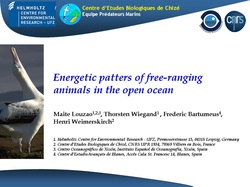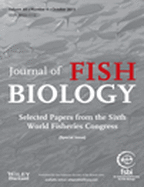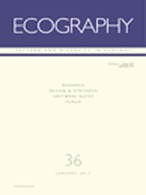 During September 2013, José Luis Murcia from Asociación de Naturalistas del Sureste (ANSE, http://www.asociacionanse.org/) and Maite Louzao from IEO were the two observed collecting data not only in the marine predator distribution but also on human pressures such as fishing activity and marine debris in JUVENA surveys (AZTI-IEO).
 During September 2013, we will have the opportunity of tracking predator autumn pelagic migration through the Bay of Biscay, from Asturias in the south to Bretagne in the north. Systematic censuses will be carried out on board R/V Ramón Margalef of the Spanish Institute of Oceanography within the annual JUVENA surveys (AZTI-IEO).
 http://www.thorsten-wiegand.de/ http://www.thorsten-wiegand.de/ During this week, Maite Louzao will be visiting the Department of Ecological Modelling in the UFZ (Leipzig, Germany) in order to collaborate with Thorsten Wiegand. The objective of this research stay is to advance in the coupling of the energy expenditure model of albatrosses with an individual-based model, one of the core objectives of the CONPELHAB project.
 http://www.movelab.net/ http://www.movelab.net/ During this week, Maite Louzao will be collaborating with the MoveLab (http://www.movelab.net/) from the Center for Advanced Studies of Blanes (CEAB-CSIC), Spain. Maite will be working with Frederic Bartumeus and his research team regarding the movement ecology of albatrosses. Movement Ecology Lab is a highly collaborative and multidisciplinary research lab that addresses fundamental and applied questions in relation to animal movement and dispersal processes.
 Between 15-19 July 2013, Maite Louzao attended the XIth SCAR (Scientific Committee on Antarctic Research) symposium "Life in Antarctica: Boundaries and Gradients in a Changing Environment", http://www.icm.csic.e/XIthSCARBiologySymposium/.
An important aspect of this symposium is the outreach and education section, which will emphasize the importance of communication between polar researchers and educators in order to improve understanding and connections between scientists and society.
Maite contributed with the an interesting talk regarding the energetic patterns of free-ranging animals in the open ocean. Free-ranging animals search for preys in their surrounding and have to adapt their movement and foraging strategies to current environmental conditions to accomplish their energetic requirements and to maximize their fitness. Foraging in the Southern Ocean, the windiest part of the world, is challenging even for the greatest flying bird at sea: the wandering albatross Diomedea exulans. For the first time, we are able to work out a full and comprehensive quantification of the energetic patterns of the open ocean foraging trips of the wandering albatross. Global Positioning System tracking data was collected in the Southern Indian Ocean during the brooding period. Model development combined (1) the identification of detailed behavioural modes, (2) the estimation of heart rate values, (3) the transformation of heart rates to energy units, by developing an instantaneous energy expenditure model and, (4) the validation of predictions against independent empirical distributions. Our work unveils the importance of considering fine scale behavioural modes to make realistic estimates of trip energy expenditure for flying birds at sea. This is essential since the energy budget is the central link of foraging behaviour with life history traits and a key factor in understanding the factors determining their at-sea movements.
 This study demonstrates the utility of trawl data, collected during acoustic surveys of pelagic fish stocks as a way of confirming fish identification, to characterize the pelagic community, as well as allowing description and prediction of fish distribution patterns, based on data from Spanish Atlantic Ocean shelf surveys during spring 2005 – 2011. The composition of the pelagic community is described, as well as spatial and temporal patterns of variation in both the community composition and the presence and importance of two of the main exploited pelagic species, sardine Sardina pilchardus and anchovy Engraulis encrasicolus. The most important species in terms of both frequency of occurrence and standardized mass in hauls were mackerel Scomber scombrus, hake Merluccius merluccius, horse mackerel Trachurus trachurus, S. pilchardus and bogue Boops boops. Multivariate analysis indicated significant effects of depth, geographical area and year on haul composition. Descriptive generalized additive models (GAM), with latitude, longitude and depth as predictors, identified clear spatial patterns in the occurrence and abundance of both S. pilchardus and E. encrasicolus, with abundance being highest closer to the coast and, in the case of E. encrasicolus, higher near the French and Portuguese borders. Further GAM analysis, using environmental variables to explain spatial patterns, revealed significant effects of depth and sea surface temperature (SST) gradient and depth on S. pilchardus importance, while E. encrasicolus importance was related to SST. The importance of both species in hauls was higher in the years of higher spawning stock biomass (SSB) and E. encrasicolus also appeared to expand its range when SSB was higher.
Santos, M.B., González-Quirós, R., Riveiro, I., Iglesias, M., Louzao, M., Pierce, G.J. In Press. Characterization of the pelagic fish community of the North Western and Northern Spanish shelf waters. Journal of Fish Biology.
 | Click here to upload file | | File Size: | 1017 kb | | File Type: | pdf |
Download File
Shifts in the diet of top predators can be linked to changes in environmental conditions. In this study, we
tested relationships between environmental variation and seasonal changes in diet of a top predator, the grey-headed albatross Thalassarche chrysostoma, breeding at Bird Island, South Georgia in an austral summer of 1999/2000. Oceanographic conditions in that year around South Georgia were abnormal (i.e. anomalously high sea surface temperature to a relative 19-year long-term mean). The diet of grey-headed albatrosses showed high seasonal variation, shifting from cephalopods (42.9 % by mass) in late February to Antarctic krill Euphausia superba (58.3 %) in late April, and grey-headed albatrosses breeding performance
was low (16.8 %). This study shows these albatrosses did not manage to find sufficient alternative prey and highlight the risk to top predators if there is an increase in the frequency or severity of food shortages in Antarctic waters
Xavier, J.C., Louzao, M., Thorpe, S.E., Ward, P., Hill, C., Roberts, D., Croxall, J.P., Phillips, R.A. 2013. Detecting intra-annual variations in the feeding ecology of a top predator in relation to environmental change: can they adapt successfully? Marine Biology 160:1597–1606.
 | Click here to upload file | | File Size: | 857 kb | | File Type: | pdf |
Download File
 Spatial modelling studies stress the importance of predicting future species distribution in changing environments, but it is also important to establish historical distribution ranges of species to provide baseline conditions for understanding distribution shifts. We focused on pelagic ecosystems, the largest ecosystem on Earth. Based on boosting algorithms, we reconstructed the foraging patterns of an oceanic predator, wandering albatross Diomedea exulans, in the highly dynamic Southern Ocean over the last half century. To access the unobserved past oceanographic conditions, we used simula-tions of the OPA-PISCES oceanic model for the 1958 – 2001 period. Firstly, we validated the simulated oceanographic variables (sea surface temperature and height, wind speed and chlorophyll a) for the 1998 – 2001 period with remotely sensed oceanographic data, which were highly correlated, except chlorophyll a. Secondly, we developed two habitat models (based on simulated and observed oceanographic variables) describing the foraging probability of albatrosses. We detected no statistically significant differences between the two models and predictions of both models matched the observed distribution patterns reasonably. Finally, we projected the most likely historical key pelagic habitats of albatross for the 1958 to 2001 period and characterised recurrent, occasional and unfavourable foraging areas in a decadal basis based on average predictions and their standard deviations. Our findings 1) provided a historical baseline (1958 – 1968) of recurrent, occasional and unfavourable foraging habitats, 2) evidenced a progressive habitat shift the following decades driven by a propagation of sea surface height from SE South Africa towards Antarctica from 1958 to 2001 and 3) mea-sured habitat change rates of wandering albatross over the last half century. To our knowledge, our study provides the first quantitative long-term assessment of the spatial response of a marine top predator to changing pelagic habitats of the Southern Ocean and highlighted the oceanographic mechanisms involved, offering new insights on future effects of climate change on the pelagic realm.
Louzao, M., Aumond, O., Hothorn T., Wiegand, T., Weimerskirch, H. 2013. Retrospective habitat modelling: changes in oceanographic habitats of an oceanic predator over the last half century. Ecography 36: 057–067.
 | Click here to upload file | | File Size: | 4134 kb | | File Type: | pdf |
Download File
The protection of key areas for biodiversity at sea is not as widespread as on land and research investment is necessary to identify biodiversity hotspots in the open ocean. Spatially explicit conservation measures such as the creation of representative networks of marine protected areas (MPAs) is a critical step towards the conservation and management of marine ecosystems, as well as to improve public awareness. Conservation efforts in ecologically rich and threatened ecosystems are specially needed. This is particularly urgent for the Mediterranean marine biodiversity, which includes highly mobile marine vertebrates. Here, we studied the at sea distribution of one of the most endangered Mediterranean seabird,
the critically endangered Balearic shearwater Puffinus mauretanicus. Present knowledge, from vessel-based surveys, suggests that this species has a coastal distribution over the productive Iberian shelf in relation to the distribution of their main prey, small pelagic fish. We used miniaturised satellite transmitters to determine the key marine areas of the southern population of Balearic shearwaters breeding on Eivissa and spot the spatial connections between breeding and key marine areas. Our tracking study indicates that Balearic shearwaters do not only forage along the Iberian continental shelf but also in more distant marine areas along the North African coast, in particular W of Algeria, but also NE coast of Morocco. Birds recurrently visit these shelf areas at the end of the breeding season. Species distribution modelling identified chlorophyll a as the most important environmental variable in defining those oceanographic features characterizing their key habitats in the western Mediterranean. We identified persistent oceanographic features across time series available in the study area and discuss our results within the current conservation scenario in relation to the ecology of the species.
Louzao, M., Delord, K., García, D., Boué, A., Weimerskirch, H. 2012. Protecting persistent dynamic oceanographic features: transboundary conservation efforts are needed for the critically endangered Balearic shearwater. PLoS ONE 7(5): e35728. doi:10.1371/journal.pone.0035728
 | Click here to upload file | | File Size: | 2088 kb | | File Type: | pdf |
Download File
An amazing video produced by our colleague Xulio Valeiras from the Spanish Institute of Oceanography showing the PELACUS multidisciplinary survey in April 2012
|










 RSS Feed
RSS Feed




